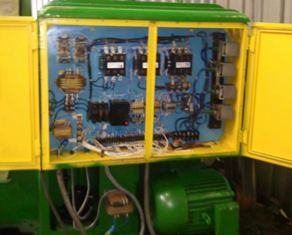Influence of voltage deviations on the operation of electrical receivers
 The significant influence of the mains voltage on the operation of electrical consumers necessitates paying great attention to maintaining the voltage at the consumers' terminals close to the nominal voltage. The voltage supplied to the consumers is one of power quality indicators.
The significant influence of the mains voltage on the operation of electrical consumers necessitates paying great attention to maintaining the voltage at the consumers' terminals close to the nominal voltage. The voltage supplied to the consumers is one of power quality indicators.
Changes in mains voltage can be classified as follows:
1. Slow voltage changes that usually occur during network operation. These changes are called voltage deviations... Voltage deviations are defined as the difference between the actual voltage at the terminals of the power consumers and rated voltage… Voltage deviations can be negative or positive. The first to correspond under voltage in relation to the nominal, the second — increase in voltage.
Voltage deviations in electrical networks are caused by changes in network loads, operating modes of power plants, etc.
2. Rapid changes in voltage due to faults in electrical systems and other causes. Examples include short circuits, swinging machines, turning on and off one of the elements of the installation, etc. Rapid voltage fluctuations are caused.
Everything receivers of electrical energy are designed to operate at a specific rated voltage. Voltage deviations from the nominal voltage at their terminals lead to deterioration of the operation of electrical receivers.
The change in the main characteristics of incandescent lamps depending on the voltage at their terminals is given in fig. 1.
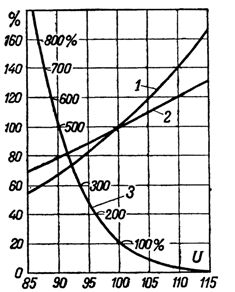
Rice. 1. Characteristics of incandescent lamps: 1 — luminous flux, 2 — luminous flux, 3 — service life (numbers on the ordinate for curves 1 and 2).
The curves shown show the great influence of voltage on the performance of incandescent lamps. For example, a 5% decrease in voltage corresponds to an 18% decrease in luminous flux, and a 10% decrease in voltage causes a decrease in the luminous flux of the lamp by more than 30%.
A decrease in the luminous flux of the lamps leads to a decrease in the illumination of the workplace, as a result of which labor productivity decreases and quality indicators deteriorate.
The poor lighting of workplaces, paths, streets, etc. increases the number of accidents with people. Voltage sags degrade the efficiency of incandescent lamps. Reducing the voltage by 10% reduces the luminous efficiency of the lamp (lm / m / W) by 20%.
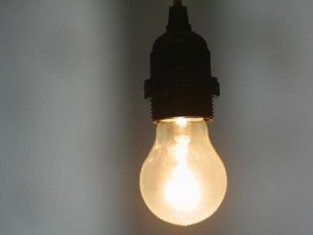
An increase in the mains voltage leads to an increase in the efficiency of the lamps.But increasing the voltage leads to a sharp decrease in the life of the lamps. With a 5% increase in voltage, the service life of incandescent lamps is reduced by half, and with a 10% increase - more than 3 times.
Fluorescent lamps are less sensitive to mains voltage fluctuations. Variations in voltage of 1% will cause an average change in lamp luminous flux of 1.25%.
In household heating devices (tiles, irons, etc.) the heating elements consist of active resistances. The power given by them depending on the mains voltage is expressed by the equation
P = I2R = U2/R
shows that a decrease in the mains voltage causes a sharp decrease in the power supplied by the heating device. The latter leads to a significant increase in the operating time of the device and excessive consumption of electricity for cooking, etc.
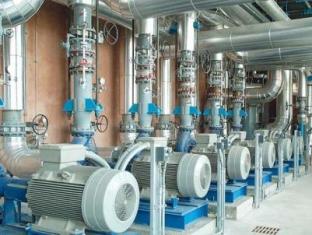
The characteristics of all other household electrical appliances also depend on the supplied voltage. When the voltage at the terminals of electric motors changes, the torque, power consumption and service life of the winding insulation change.
The torques of induction motors are proportional to the square of the voltage applied to their terminals. If the motor torque at rated voltage is taken as 100%, then at 90% voltage, for example, the torque will be 81%. Severe voltage drops can even cause motors to stall or fail to start, driving machinery with difficult starting conditions (hoists, crushers, mills, etc.).Insufficient (torques of electric motors can cause product defects, damage to semi-finished products, etc.)
The dependences of the change in the power consumed by the electric motors on the voltage during the stationary mode of operation of the system are called the static characteristics of the electric load of consumers.
As the voltage decreases, the active power consumed by the electric motor decreases due to a decrease in torque and the associated increasing slippage.
An increase in slip leads to an increase in active power losses in the motor. As the tension increases, the slip decreases and the power required to drive the mechanism increases. The loss of active power in the electric motor is reduced.
The analysis shows that the resistive load from the electric motors changes insignificantly when the voltage changes, corresponding to the normal operating modes of the system, and therefore can be assumed to be constant.
The change in the reactive load of electric motors from the voltage depends on the ratio of the reactive magnetizing power and the reactive power dissipation of the motors. The reactive magnetizing force varies approximately proportional to the fourth power of the voltage. The reactive power dissipation, depending on the current of the electric motors, varies inversely proportional to approximately the second power of the voltage.
When the voltage drops relative to the nominal (to a certain value), the reactive load of electric motors always decreases.This is explained by the fact that the reactive magnetizing power, which is up to 70% of the total reactive power consumed by the electric motor, decreases faster than the reactive dissipation power increases.
The dependences of reactive power consumption on the network voltage for some users are shown in fig. 2. These curves are the static characteristics of the electrical loads of consumers as a whole, that is, taking into account the influence of transformers, lighting, etc. over them.
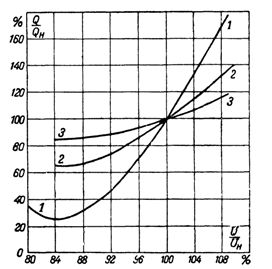
Rice. 2. Static characteristics of electrical loads: 1 — paper factory, cosφ = 0.92, 2 — metalworking plant, cosφ = 0.93, 3 — textile factory, cosφ = 0.77.
Paper Mill Curve 1 is very steep. The lower the load on the motors and the higher their power factor at nominal voltage, the steeper the curve of dependence of the consumed reactive power on the mains voltage. Long-term voltage reduction of 10% at the terminals of electric motors when they are fully loaded, due to the higher temperature of the windings, until the insulation of the motors wears out approximately twice as fast as at the rated voltage.

